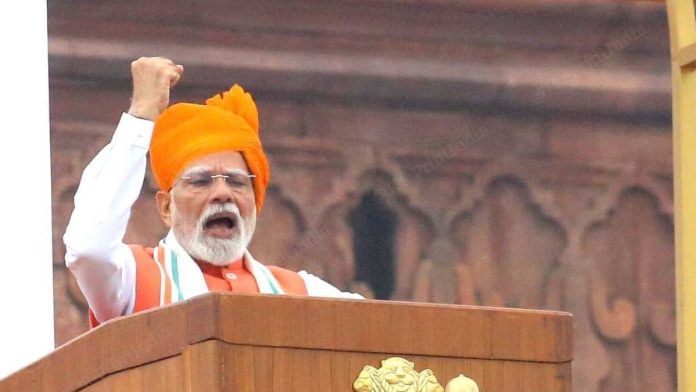New Delhi: ‘Atmanirbharta’ and India’s push toward self-reliance even in the space sector found mention in Prime Minister Narendra Modi’s Independence Day speech from the Red Fort Friday.
Congratulating Indian Air Force Group Captain Shubhanshu Shukla on his recent mission to the International Space Station (ISS), Prime Minister Narendra Modi said that India is working towards building its own space station, and will also launch its very own human spaceflight mission soon.
“We are working on becoming self-reliant, atmanirbhar, even in the space sector. We are preparing for the Gaganyaan Mission. We are also preparing to set up our own space station,” PM Modi said.
Indian astronaut Shukla, who was part of a 20-day Axiom-4 Mission, has returned from the ISS and will be returning to India in a few days. As part of this mission, he led seven microgravity experiments designed by top Indian research institutes.
In 2023, setting up the roadmap for India’s space programme, PM Modi had set an ambitious target for the Indian Space Research Organisation (ISRO) to design and set up India’s very own space station, the Bharatiya Antariksh Station (BAS), by 2035. In subsequent meetings, it was announced that the first module of the space station—built in line with the ISS—will be launched as early as 2028.
What is the BAS?
The Bharatiya Antariksh Station will be designed to have a crew command module, habitat module, propulsion module and docking ports. In a media briefing earlier this year, ISRO chairperson V. Narayanan had said that the entire BAS capsule is estimated to weigh around 50 tonnes, which will be increased in future, depending on the expansion of the station.
Senior experts from ISRO said that with the existing ISS in its final leg of operations—expected to be retired by 2030—the significance of BAS increases globally. “India’s BAS will serve as a gateway to interplanetary missions for India, and will also become an international platform for collaborative space research,” a senior ISRO official said.
The current ISS in orbit performs the functions of bringing together international flight crews, coordinating multiple launch vehicles, ensuring global distribution of launch and flight operations, training, engineering and development facilities, communications networks, and the international scientific research community. The ISS was designed between 1984 and 1993 as a joint project, with parts of the station constructed by the US, Canada, Japan, Europe and Russia.
According to the National Aeronautics and Space Administration (NASA), the ISS is the largest human-made object ever to orbit Earth, having a pressurised volume of approximately 900 m3 (31,000 ft3), and a mass of over 400,000 kg (900,000 lbs). It orbits at an altitude ranging between 370 km and 460 km (200–250 nmi).
(Edited by Mannat Chugh)
Also Read: Indian consortium to build 1st ‘Made-in-India’ commercial Earth Observation satellite series






